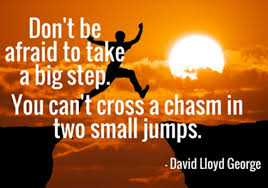
Public schools have been around since the mid 1800’s in our province. They have been a critical part of our societal fabric for a very long time. We knew that a strong public education system was critical to the health and success of our province. I found out some time ago with intrigue that Saanich was actually one of the first established school districts in the province. How cool is that? We were a trend setter here on the peninsula!
At their core, public schools play a critical role in the development and maintenance of a healthy and productive society. They provide a free, or nearly free, 13 year educational foundation for every child in British Columbia. We graduate informed, competent young adults who are able to participate as productive, socially aware and compassionate members of our Canadian and global societies. And for the most part, I think we do that quite well. We have many great British Columbians who have graduated from our public school system and gone on to do remarkable things – Barbara Howard (inducted into the BC Sports Hall of Fame and the first visible minority hired by the Vancouver School Board in 1959), Christine Sinclair (2 time Olympic bronze medalist and professional soccer player) , Fred Wah (winner of the Governor General’s Award and Canada’s Poet Laureate) and of course the incredible Ryan Cochrane (silver and bronze Olympic medalist and graduate of Saanich’s own Claremont Secondary School).
Public education has been sometimes called the ‘great equalizer’) in our society. There isn’t really another public institution that can make that claim to the same degree as public education – we are uniquely positioned to influence our children and youth in positive ways all from a common core of curriculum and access. We teach things such as personal responsibility, acceptance and compassion for others , social justice, emotional wellness, critical thinking and analysis, literacy, numeracy, the importance of learning from the past, the critical need for the arts, as well as practical hands-on skills through a provincially mandated curriculum. Regardless of where you live, how much money you have, whether you are a first generation Canadian or your family has been here for many generations, our extraordinary public education system is there helping to build a well-informed citizenry.
We do important work and we do it pretty well (e.g. Conference Board of Canada – Education and Skills rankings).
And today, public education is currently undergoing a massive change – from curriculum content and instructional pedagogy to the practices of student assessment and reporting – with many of these changes really turning things on their heads. In my close to 30 years in public education there has never been such a significant shift. We’ve had new curriculum or reporting standards, but these current changes are almost revolutionary.

Learning in the Digital Age
It’s all happening rather quickly as well. As an example, the entire K-12 curriculum is changing – every single grade, every single content area, every single course in a span of just a few years (BC Curriculum). We are moving from an over saturated, content-focused curriculum to one that uses much of that same content to teach and learn about what should be at the core – Thinking, Communication, and Personal & Social competencies.
But WHY? Why the big shift now? Looks like we were already doing some pretty good stuff. Various international measurements have placed BC at the top in many world rankings (e.g. OECD PISA). Yup – right near the top or at the very top. We have been the envy of many other jurisdictions around the world.
So WHY fix what isn’t broken? Great question.

Universally Accessible Content in the Palm of Your Hand
First and probably most importantly, content is universally accessible these days. Just grab your smartphone and type in a question — or ask it one. You should have your content-based answer in about 1.5 seconds or so. You may need to do a few additional key strokes to get to exactly what you want, but it’s almost always there. And often with pictures and video support.
Instead of teaching content for the sake of content, shouldn’t we be using this easily located information to challenge our children to think critically about it – empowering them to be able to separate out objective information from conjecture and pure opinion? Shouldn’t we be teaching our children to not only find solutions to already existing problems, but encourage them to find a bunch of new problems and use their inquiry skills and critical analysis skills to creatively find some novel solutions?
I don’t mean for this to be a critique of any of our content-based curriculum. Content has a purpose. We need to know ‘stuff’ to be able to make sense of the world. We need to know certain things (e.g. historical facts, rules of law, the alphabet) as well as certain skills (e.g. computational skills, paragraph writing, computer coding) but do we really need to have memorized a litany of particular facts. For example, I’m not sure it has proven very useful to me to remember the value of Avogadro’s number in my adult life. I used to teach chemistry and loved doing so – but having 6.02 x 10^23 stuck in my head has not really proven to be particularly relevant to my day-to-day interactions. However, having some sound knowledge of basic chemistry and how it applies to our world, can help me to critically think about things differently — for example, how chemical fertilizers may effect my lawn or garden or community.

Compassion is a Critical Skill
In other words, I believe that a central focus of our public education system should be using the knowledge of some ‘stuff’ to teach our children to do things like perform a critical analysis of information, build their collaboration skills in working with others, deepen their understanding and compassion for people, broaden their understanding of the world and its complexities, and find creative solutions to old and new problems. Our education system needs to “build people” capable of making our world a better place. Memorizing content, in an of itself, will not do that.
The topic of curriculum is the focus of our upcoming PAC event in Saanich. On Nov 9th our district will be hosting an evening of information on BC’s newly revised curriculum for our school PACs. It should be an engaging topic exploring what the province’s revised curriculum is all about — and also what it isn’t about! I’m really looking forward to the conversation.
We’re in an exciting time in public education.
As we work to implement this massive shift in educational pedagogy and instructional practice, we will most definitely make some mistakes, but I’m more convinced than ever that it’s the right thing to do for our society– and for our children.


Best one yet!!
Elsie McMurphy 250 656-2705
>
LikeLiked by 1 person
As a parent, I appreciate a shift in focus on how to learn and reflective learning, however what I notice (my child is in Victoria district) is that his teachers are still focusing on pushing through content while adding on a ton of checklists, rubrics from the competencies, having students prove competencies are met linking to their work. All of these things are great, but something has to give. Kids have to be taught how to be self reflective and some of the content has to go – we can’t just laden kids with a ton of new, challenging reflection and proving they’ve reflected, without taking away content from our past practice. He is finding the shift overwhelming, as the amount of checklists/rubrics etc is exhausting.
LikeLike
Thank you for sharing your observation. While I can’t comment directly on your experience, I would suggest that you follow up directly with your son’s teacher and possibly administrator. This is a learning curve for everyone. As we become more familiar with the curriculum and the concepts behind the paradigm shift, we will see less focus on the volume of information, and more onto the analysis and synthesis of the concepts behind it.
LikeLike